Millau Viaduct
The Millau Viaduct (French: le Viaduc de Millau, Occitan: lo Viaducte de Milhau) is an enormous cable-stayed road-bridge that spans the valley of the river Tarn near Millau in southern France.
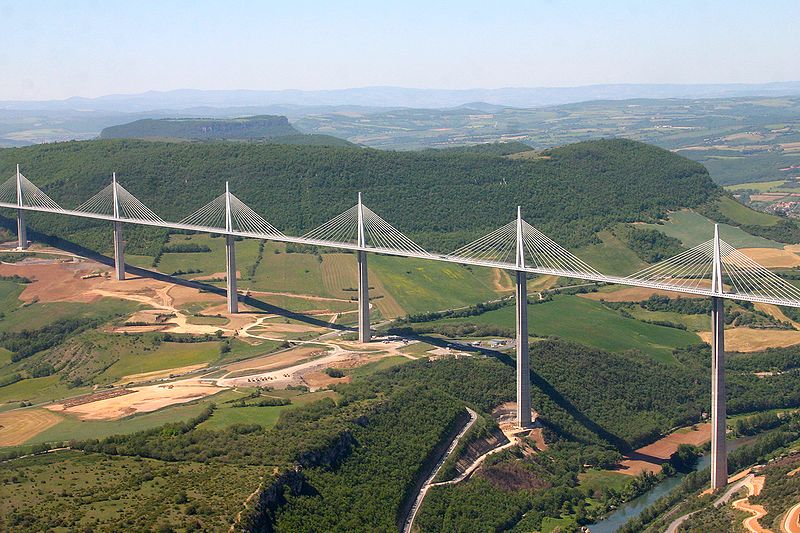
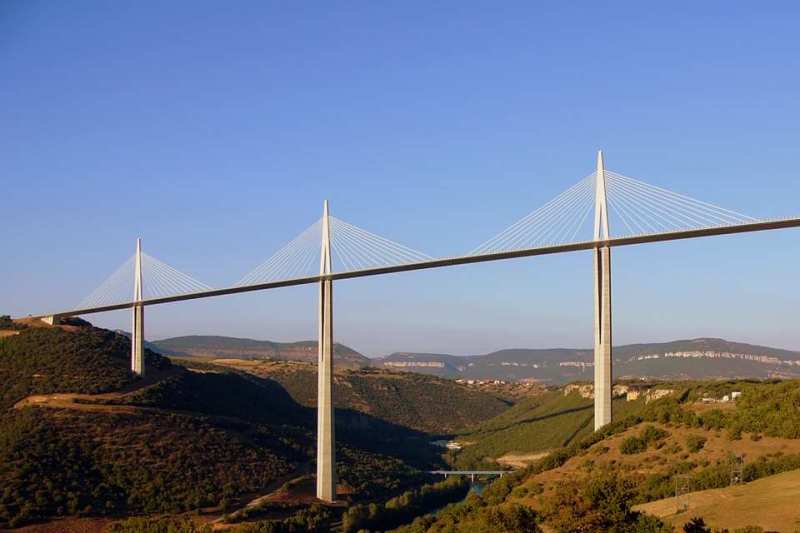
Millau Viaduct
Official name Le Viaduc de Millau
Carries 4 lanes of the A75 autoroute
Crosses Valley of the River Tarn
Design Cable-Stayed
Total length 2 460 m (8,071 ft)
Width 32 m (105 ft)
Longest span 342 m (1,122 ft)
Clearance below 270 m (886 ft) at maximum
Opening date 14 December 2004
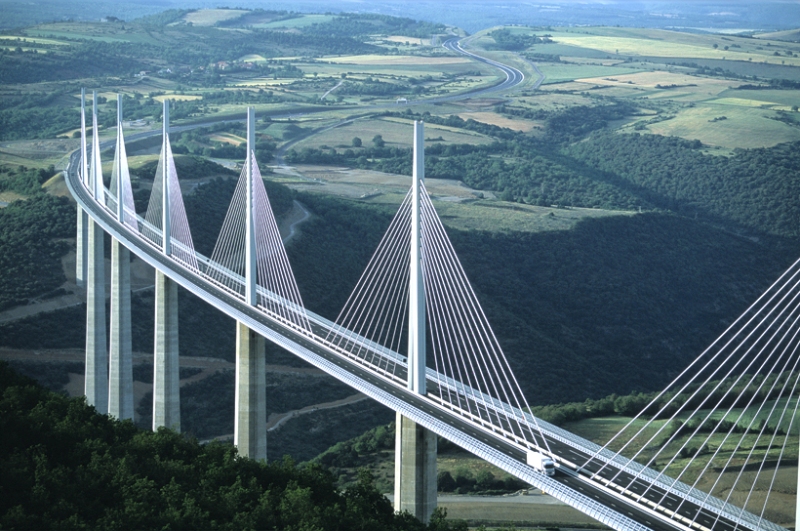
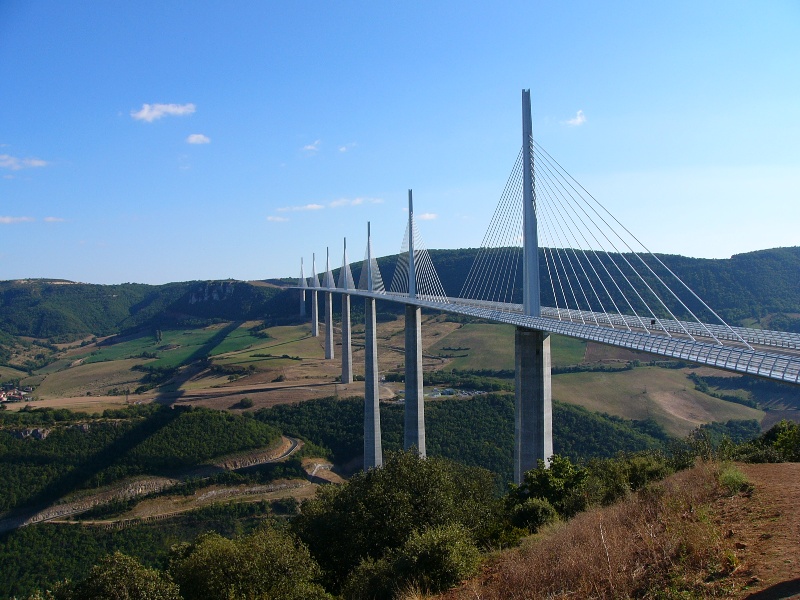
Designed by the structural engineer Michel Virlogeux and British architect Norman Foster, it is the tallest vehicular bridge in the world, with one mast's summit at 343 metres — slightly taller than the Eiffel Tower and only 38 m shorter than the Empire State Building. The viaduct is part of the A75-A71 autoroute axis from Paris to Montpellier. It was formally dedicated on 14 December 2004, inaugurated the day after and opened to traffic two days later. The bridge won the 2006 IABSE Outstanding Structure Award.
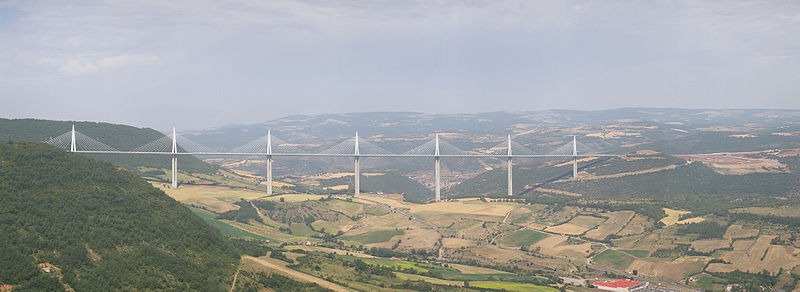
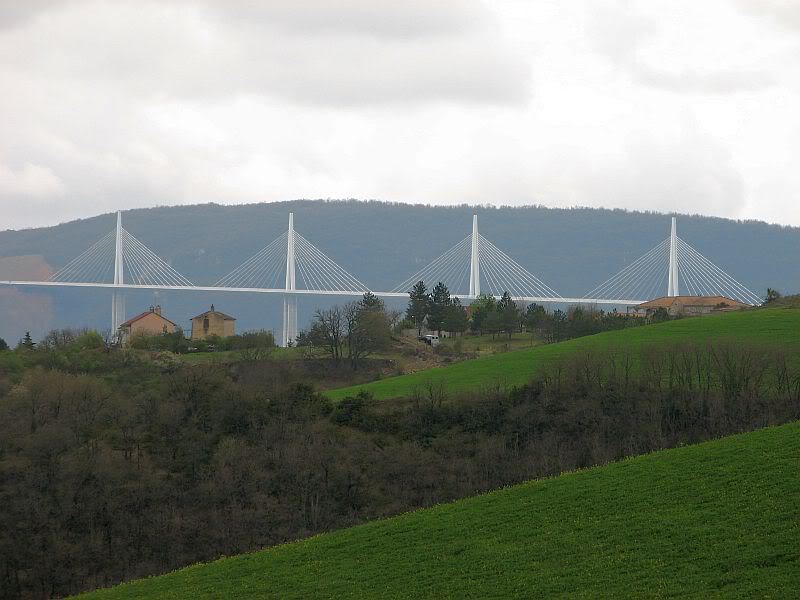
Location
The Millau Viaduct is located on the territory of the communes of Millau and Creissels, France, in the département of Aveyron. Before the bridge was constructed, traffic had to descend into the Tarn River valley and pass along the route nationale N9 near the town of Millau, causing heavy congestion at the beginning and end of the July and August vacation season. The bridge now traverses the Tarn valley above its lowest point, linking two limestone plateau, the Causse du Larzac and the Causse Rouge, and is inside the perimeter of the Grands Causses regional natural park.
The bridge forms the last link of the A75 autoroute, (la Méridienne) from Clermont-Ferrand to Pézenas (to be extended to Béziers by 2010). The A75, with the A10 and A71, provides a continuous high-speed route south from Paris through Clermont-Ferrand to the Languedoc region and through to Spain, considerably reducing the cost of vehicle traffic travelling along this route. Many tourists heading to southern France and Spain follow this route because it is direct and without tolls for the 340 kilometres (210 mi) between Clermont-Ferrand and Pézenas, except for the bridge itself.
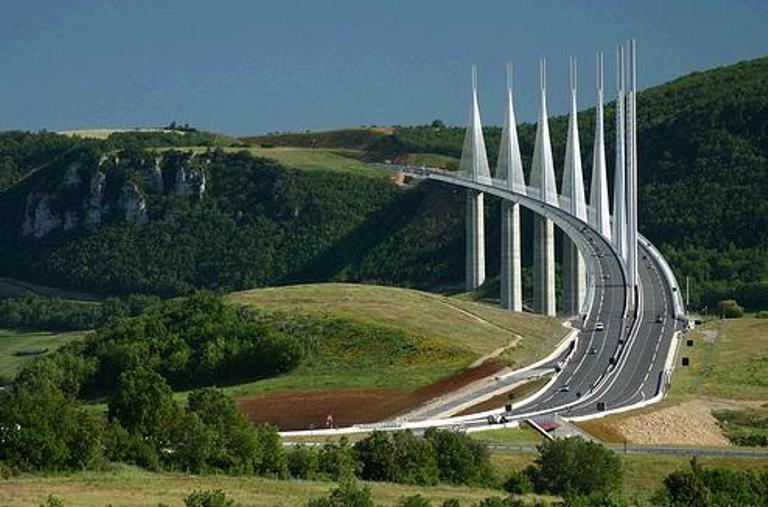

Description
The Millau Viaduct consists of an eight-span steel roadway supported by seven concrete pylons. The roadway weighs 36,000 tonnes and is 2,460 m (8,100 ft) long, measuring 32 m (100 ft) wide by 4.2 m (14 ft) deep, making it the world's longest cable-stayed deck. The six central spans each measure 342 m (1,120 ft) with the two outer spans measuring 204 m (670 ft). The roadway has a slope of 3% descending from south to north, and curves in a plane section with a 20 km (12 mi) radius to give drivers better visibility. The pylons range in height from 77 m (250 ft) to 246 m (810 ft), and taper in their longitudinal section from 24.5 m (80 ft) at the base to 11 m (36 ft) at the deck. Each pylon is composed of 16 framework sections, each weighing 2,230 tons. These sections were assembled on site from pieces of 60 tons, 4 m (13 ft) wide and 17 m (56 ft) long, made in factories in Lauterbourg and Fos-sur-Mer by Eiffage. The pylons each support 97 m (320 ft) tall masts.
The pylons were assembled first, together with some intermediate temporary pylons which were in themselves a substantial construction project.
The entire length of deck surface (that is to say, the bridge itself, the roadway) was slid out across the pylons from both sides by hydraulic rams that moved the deck 600 mm every 4 minutes. Then the masts were erected on top of the pylons, connected to the deck and the temporary pylons removed.
Construction began on 10 October 2001 and was intended to take three years, but weather conditions put work on the bridge behind schedule. A revised schedule aimed for the bridge to be opened in January 2005. The viaduct was inaugurated by President Chirac on 14 December 2004 to open for traffic on 16 December, several weeks ahead of the revised schedule.
The construction of the bridge was depicted in an episode of the National Geographic Channel MegaStructures series, as well as Discovery Channel's Extreme Engineering.